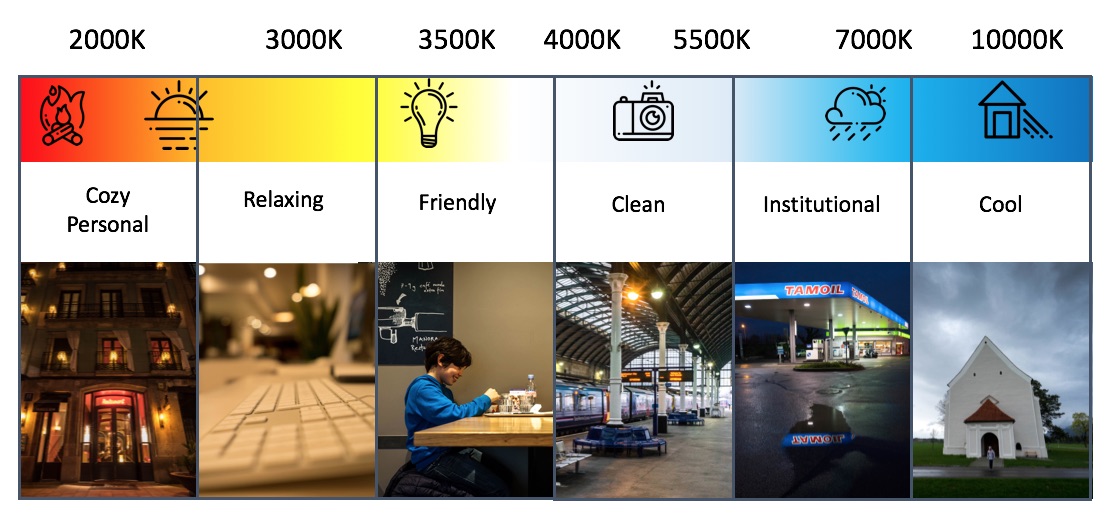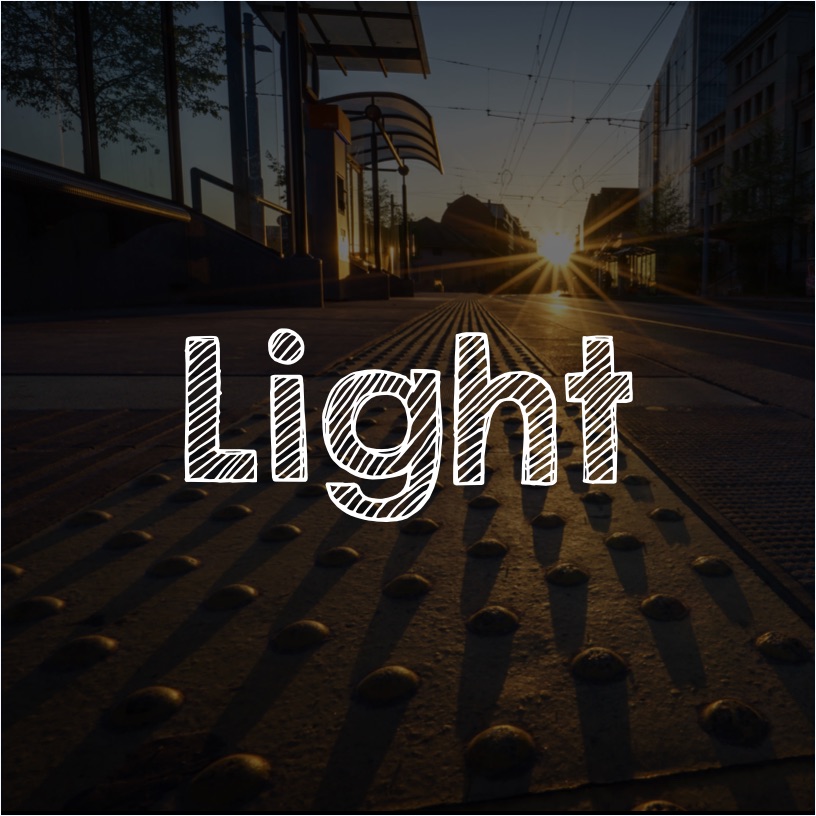

Physical characteristics of Light
Temperature of the light (K)
The visible spectrum of light color is measured in Kelvin (K) and goes from a low Kelvin value of red (about 1000 K) to a high Kelvin value of blue (15,000+ K). For the purpose of this post we are only going to talk about the lights that you would encounter in normal photography, which range from about 2500 K to 10,000 K.

Intensity of the light (Lux or Lumen)
The lumen is the unit of luminous flux, a measure of the total quantity of visible light emitted by a source.
Monochromatic vs wide specter light
Light sources for photography
Different sources of light
Natural Primary: Sun, Sky, Stars, Sparks, Lava ...
Artificial Primary: Fire, chemical lamps, Electrical Lamps
Derived: Reflected/Refracted, objects (Moon, Window, Walls, clouds...)
reflectors characteristics will have an impact of the resulting light.
- small: mirrors, windows, fountains
- large: large uniform wall
Light rays directions
parallel light rays are generated by a close or narrow source of light. As a result the shadow will be very well identified.
multidirectional light rays will produce a diffused shadow
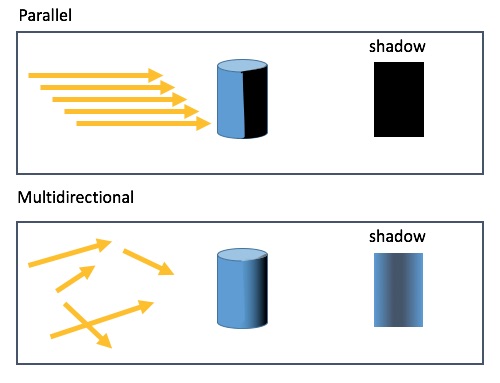
Hard and soft light
Hard light
linked to the directionality of the light
can be produced by a small powerful light source
Soft light
produced by a close large source.
a subject close to a large window, the windows can be identified as a soft unidirectional light. Note that small windows in a dark room will act a s a hard light
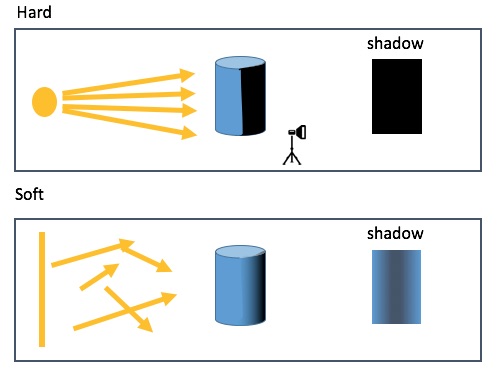
Light and shadows
Shadow is the absence of light.
Shadows are key to highlight the part that are exposed to the light.
- Hard-hard
- Hard-soft
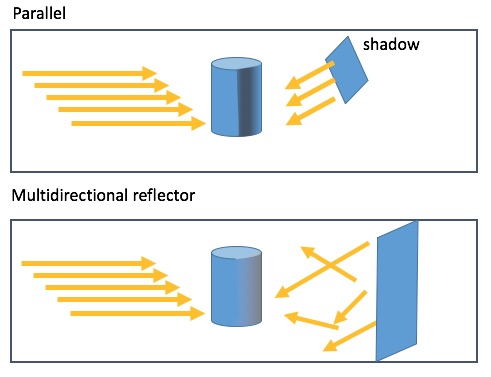
Make soft lights
It is possible to create a softer light from a spot, a flash.
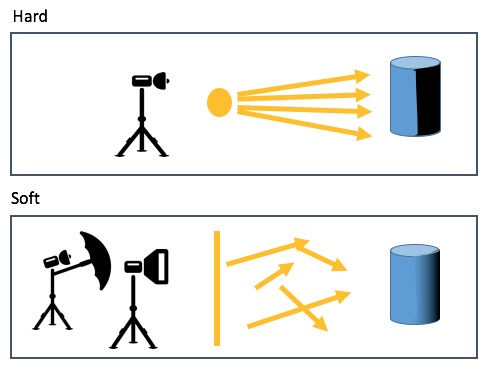
Diffuser
The principle is to have the light to travel through a material that will change the light characteristics and directions
Reflectors
The special reflector can be make in order to reflect the light in a multidirectional manner. This is a the principle of a bouncing flash.
You can be creative regarding the reflectors. For example using a wall.
Make the light bigger
Basically use a reflection in order to have the light source look bigger and therefore having light rays coming in a multidirectional way.

Light Temperature
Light temperature and the resulting ambiance
